Grooming a longhaired cavy
by Caroline Creese, 2009
A longhaired cavy’s coat grows at the rate of approximately 1” a month. If the coat is to be kept in an untangled state, and if the coat’s density and eveness is to be maintained, it is necessary to undertake careful and regular grooming, and to keep the growing coat in ‘wraps’ so that it does not drag on the ground.
Ingredients
Kitchen Paper (good quality 2-ply is best)
Balsa wood* strips, cut along the grain
Thick elastic bands which fit length of balsa strips without being over-stretched
*Balsa Wood strips can be purchased from model shops, around 4-5mm thickness is best
Making a basic ‘Wrap’
You will find that different exhibitors have different techniques and use slightly different materials, but this basic wrap will work perfectly well.
This technique uses two sheets of kitchen towel folded double (for extra strength) and a piece of balsa wood approximately 6cm by 2.5cm (2.5 x 1 inches) and around 4mm thick. The balsa wood is essential as ths gives the wrap ridgidity and prevents the wrap pulling and bunching the hair.
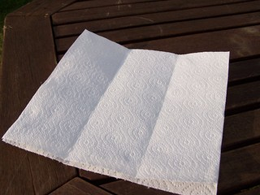
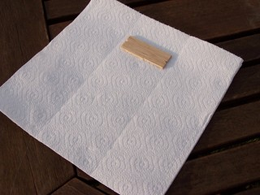
1: Fold a double thickness of kitchen paper in to three.
2: Place the balsa strip in the central section of the wrap, just over an inch from the top.
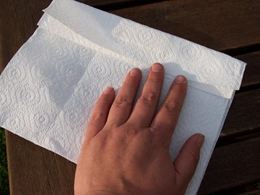
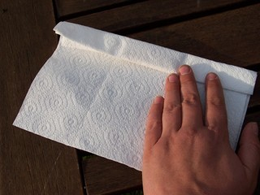
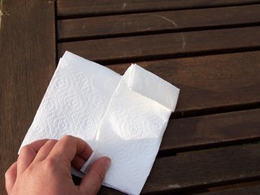
3. Fold the top of the paper over, keeping the balsa strip in place.
4: Fold the top over again to completely enclose balsa strip (prevents slippage).
5: Reverse, and fold sheet in three, so overlap is on the outside of wrap (helps to prevent kinking of coat).
Wrapping a youngster (under 5 months)
When to Start Wrapping Judging when to start wrapping a young longhair takes practice, but in general, the straight coated breeds require a back wrap at around 3 months of age (or when the coat starts to get wet on the ends).
Curly breeds can be wrapped later, generally at around 5 months.
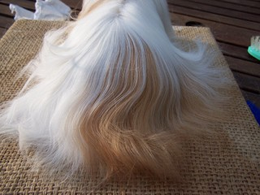
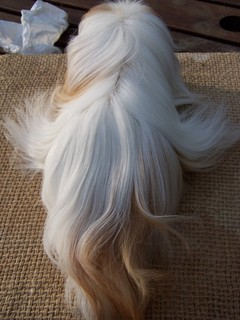
i: Create a wrap following the instructions above.
ii: Groom animal on a smooth, flat surface (a grooming board is best).
iii: Divide the coat into three sections, two sides and the ‘sweep’ (the rump hair).
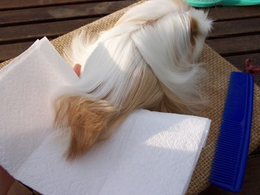
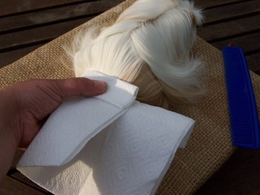
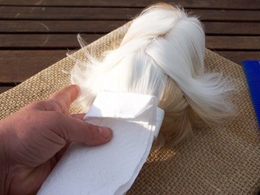
iv: Do not use a central parting, and alter the position of the parting each time you groom and re-wrap.
v: Apply the wrap by placing the central section of the paper under the sweep.
vi: Fold the two sides over to enclose the hair of the sweep.
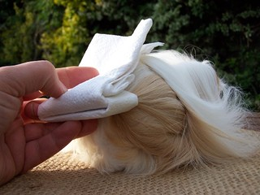
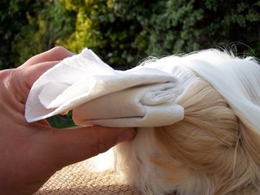
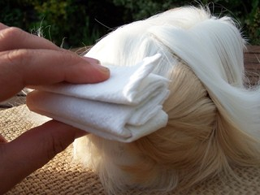
vii: Begin to fold the wrap up on top of the balsa.
In straight coats, it is better to concertina-fold (as in illstrations above) as this prevents unnecessary kinking of the coat.
In curly coats, it is better to fold the wrap over on itself (rolling) as the concertina-fold is less likely to stay securely in the hair.
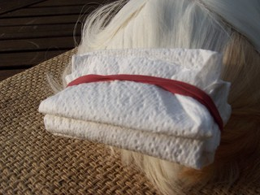
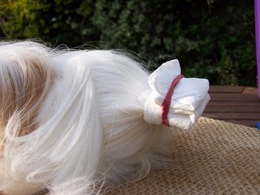
viii: Complete by securing with one (or preferably two) elastic bands. Ensure these are not too tight, as if the hair pulls, this could encourage the cavy to chew or scratch at the coat.
Likewise, ensure the elastic bands do not come in to direct contact with the hair, as this will pull.
Wrapping an older animal (5/8 months to Adult)
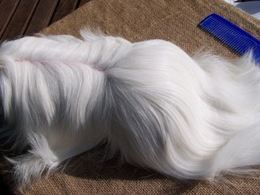
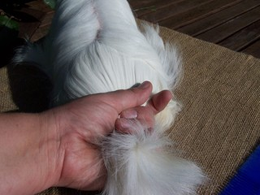
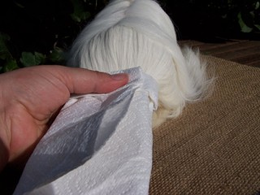
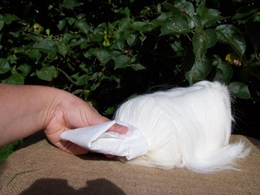
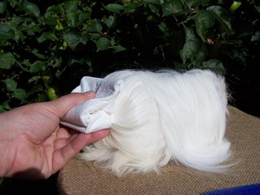
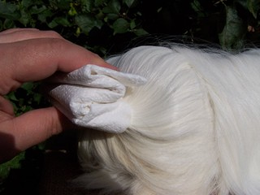
Begin by parting the coat as you would an u/5 animal.
Remember to part the coat off-centre and to move the position of the parting regularly to prevent breakage or thinning of the hair along the parting.
The back wrap should be fitted in the same way as with an u/5 animal.
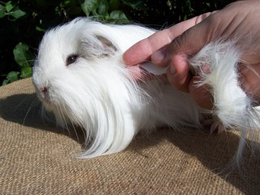
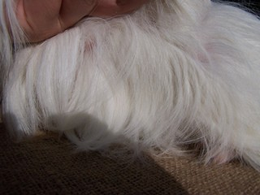
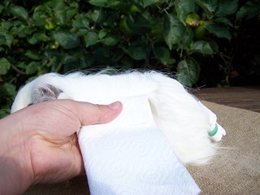
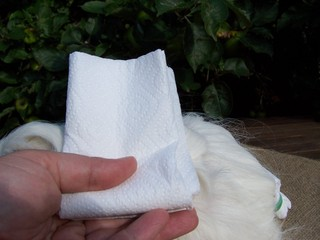
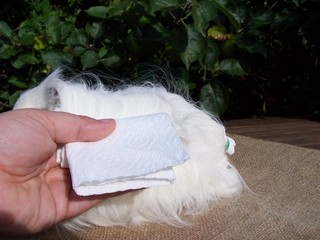
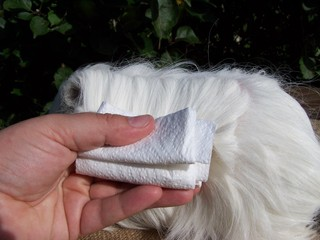
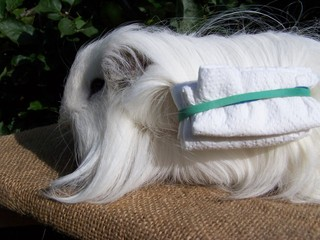
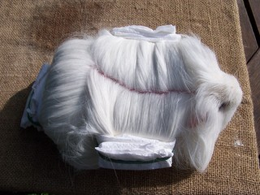
The sides are wrapped in a similar way to the sweep, but be sure to leave the majority of the chops (facial furnishings) and the undercoat out of the wrap, as these can pull is wrapped too tightly, causing the animal to scratch or chew at the coat. If the chops are wrapped in with the rest of the coat, the hair may pull when the animal moves its head.
In straight coated breeds, concertina-fold the wrap and secure with an elastic band (or two for extra security). In curly breeds, you may have to fold the wrap over on itself (roll) and secure with elastic bands.
Check the wrap is not in too tightly and the animal can move its head without pulling on the coat.
Important
It is important that the wraps are checked every day to ensure they are secure and do not have pieces of food or bedding caught up in the hair.
Of course it is better if the wraps can be removed, the cavy groomed and the wraps replaced daily, but if this is not possible, then at least they should be checked, and any debris removed. To prevent excess debris becoming entangled in the coat, exhibitors use a variety of different beddings and feeding methods. Heavy bedding such as hemp or wood chip is better than wood shavings, as the pieces are less likely to become tangled, and are much easier to remove.
Hay should still be given, but some exhibitors prefer to offer it in a hay rack off the floor of the hutch, or stuffed in to cardboard toilet-roll tubes.